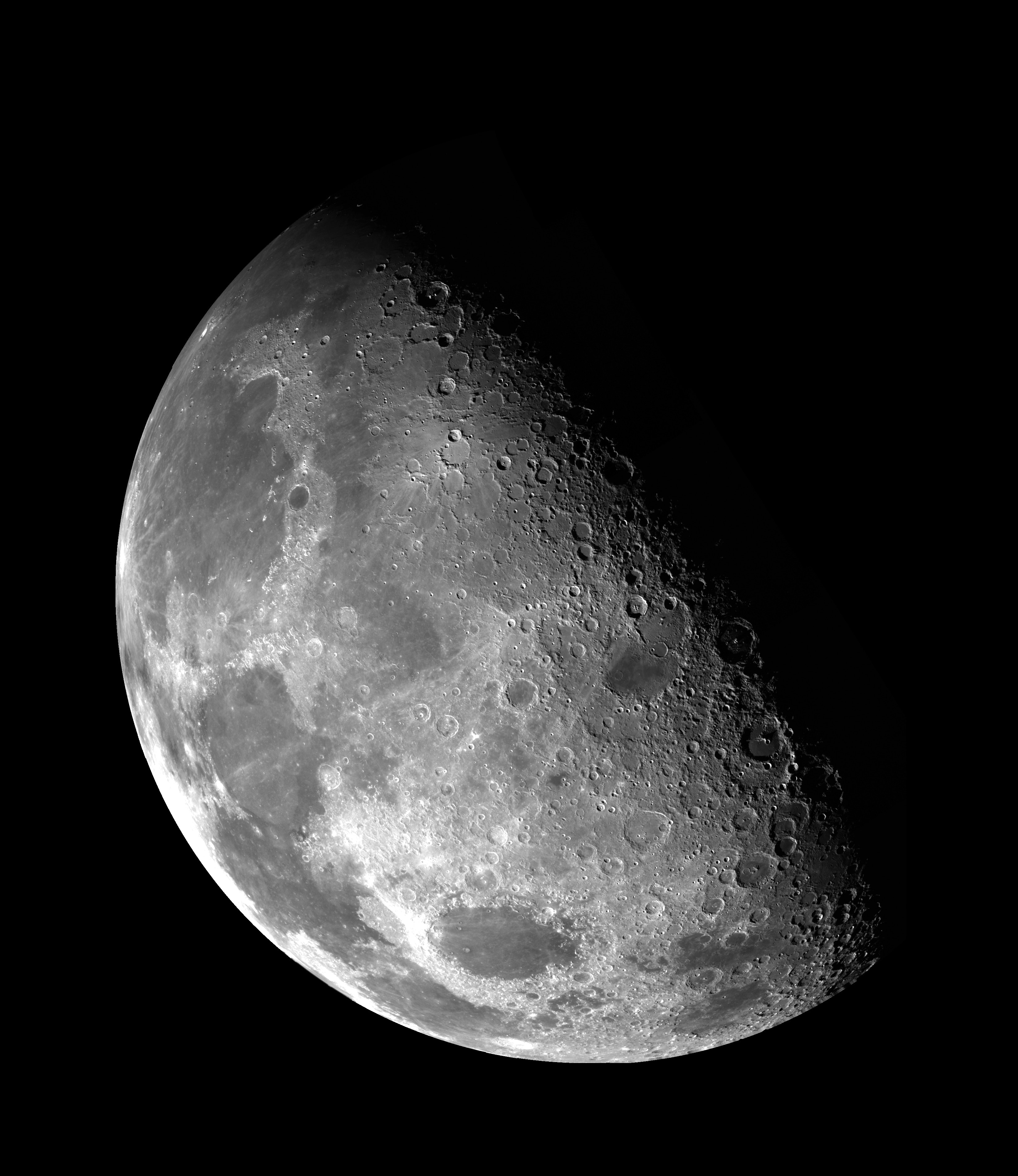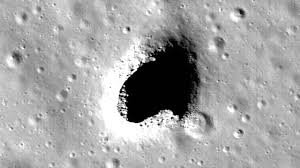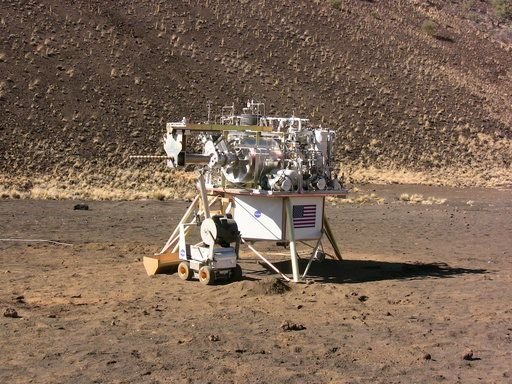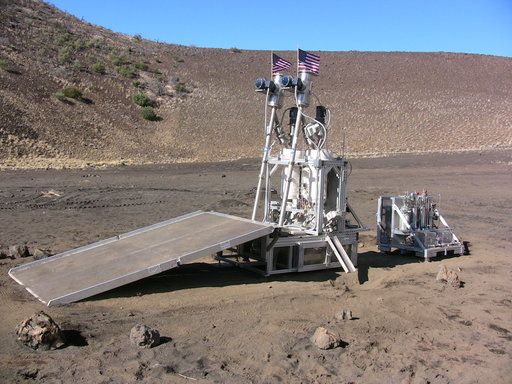A Case for the Moon Base
On the 11th of December, president Trump signed the first space policy space directive of his administration. The directive focuses NASA’s attention on building a space colony. The Russian space agency Roscosmos (Ru: Роскосмос) signed an agreement this September to work with NASA on this space colony. Professor Johann-Dietrich Woerner, the new director of the European Space Agency, envisions an international Moon village. This village would make meticulous use of 3D-printing technology. Elon Musk has called for a Moon base in July and revealed his highly ambitious plans to use the BFR to start a lunar base. Although let’s be real when are his plan not highly ambitious.
Ambitious or not, the dream of a Moon base is starting to find some reality. In this post, I hope to inform you on why we should build a Moon base and how we are going to do it. Some questions to cover are:
- Why should we build it?
- Is it economically viable?
- Where should we build it?
- What are the technological challenges to overcome regarding daily life on the Moon base?

Why build a Moon base?
We’ve been hearing a lot about a Mars colony. Mars has water, seasons, and a similar length of days, making it is similar to Earth. Gravity is somewhat lower, but enough to keep someone on the surface. The downside is the low temperature ranging from -116 °C (-178 °F) to -17 °C (1 °F), which is mellow compared to other planets in our solar system.
For scientists, the knowledge that Mars offers is a treasury. Questions regarding the origins of life could be answered, but also the field of geology will be happy to pay Mars a visit.
Visiting Mars has economic and technological prospects. Besides the availability of more land, there is the abundance of rare metals and the availability of Deuterium. Deuterium is a heavier isotope of hydrogen, which is an ingredient for fusion. The reason we are hesitant with fusion is that we don’t have a lot of deuterium readily available.
Colonizing Mars gives humanity a backup home planet, for when Earth would be destroyed by a massive asteroid, or climate change makes the planet inhospitable. Mars is also a good location as it sits between the asteroid belt and planet Earth. It can serve as a sort of trampoline to the asteroid belt and beyond.
Knowing all these benefits, why waste time on building a base on the Moon? At that point, we’re just wasting time and money. One problem is that we’ve never built a base on an extraterrestrial object; we must learn to crawl before we can walk.
Traveling to the Moon takes about 3 days. If anything goes awry, backup can arrive quickly. A trip to Mars takes at least 9 months, so the people on that base are on their own. This short travel time makes the logistics of supply so much easier.
Another benefit is that leaving the gravity of the Moon takes almost no resources compared to leaving Earth’s gravity. If we wish to send ships to Mars it makes much more sense to send materials in small batches to a Moon base for manufacturing. Once manufactured the ships go from the Moon to Mars. Smaller batches leaving Earth is more efficient as we can see from the Tsiolkovsky rocket equation; any additional mass you take with you requires more fuel, which then also requires more fuel, which also requires fuel… you get the point.
We’ll also face the same issues on a Moon base regarding survivability. The Moon is also blasted by radiation and solar rays, there is no food or breathable air. Moon temperatures range from -173 °C (-280 °F) to 127 °C (260 °F).
The moon also contains more helium 3 than the Earth has, which is also an ingredient in the nuclear fusion reaction (deuterium -> helium 3 -> helium 4). Therefore going to the Moon first doesn’t prevent further research into nuclear fusion. If you like to learn more about nuclear fusion there are many good Steemit posts on it.1 For example by @maticpecovnik.2
To summarize on why we should build a Moon base first:
- We can learn how to deal with the inhospitable environment of radiation, solar rays, and extreme temperatures on the Moon to ‘practice’ for the Mars colony.
- The Moon is much closer, which makes supply and rescue that much easier.
- The Moon allows us to learn how to generate food and water for the Mars colony.
- It still allows us to further research nuclear fusion.
- A Moon base would be the perfect stepping stone to travel to Mars.
Economic Viability
Now that we have an idea of why we should visit the Moon first we can talk about the economic perspectives. Are we simply wasting resources building a Moon base first or is it able to generate economic opportunities? Three primary areas where we can expect riches is the mining of raw materials on the Moon, the production of energy through solar or nuclear fusion, and the popularity of the Moon as a location for tourism.
Mining
The superficial rock on the Moon contains iron, titanium, magnesium, and aluminum. As mentioned before helium-3, a resource for fusion is much more common on the Moon than on the Earth. The Lunar Crater Observation and Sensing Satellite (LCROSS) suggest that it is very likely that there is ice on the moon, concentrated near the poles. Water can be broken down into hydrogen and oxygen. One used for fuel and the second aides in the combustion.
Energy
Energy production is related to mining due to required resources. Solar cells on the moon can generate large amounts of energy. There are no clouds to block the sun. There is ‘dark’ side of the Moon. But this is more in the sense of being unseen. There is a day-night cycle of two weeks sunlight for each side. Still, it might be more efficient to build solar cells on the side of the Earth since there is such a thing as Earthshine. Earthshine is sunlight reflected by the Earth that is directed towards the Moon.
The mining of water and conversion to hydrogen and oxygen for fuel production means we don’t have to lift it up from Earth. We also generate fuel for the Mars colony.
Lastly, once we start understanding nuclear fusion combined with the raw resources on the Moon and later on Mars, we will be able to generate large amounts of clean energy.
Tourism
Can you imagine what it would be like to visit the moon and see Earth from all the way out there? I sure would like to see it. As far as Moon tourism goes there already some companies getting involved, such as Space Adventures, Excalibur Almaz, Blue Origin, Virgin Galactic and SpaceX. What kind of flights would be available for people on our home planet?
- Circumlunar trajectory – A flyby of the moon. Current approximate cost $150 million.
- Lunar orbit – Spend time in orbit and go back after a set amount of time. No cost projection available, but probably between $150 and $750 million dollar.
- Lunar landing – Land on the moon and visit the moon base. Current approximate cost $750 million.
The high expenses are not just for the trip itself, you require intense training to go to space. The first space tourist Dennis Tito (in April 28, 2001) required eight months of months of training. While this can probably be turned down using state of the art training practices, Virgin Galactic plans to have a three-day pre-flight preparation, bonding and training course for their tourists.
Location
The scientists have already come up with a location for a moon base. The Lunar Reconnaissance Orbiter (LRO) makes high-resolution pictures of the surface (Figure 1). The LRO found large holes in the moon’s surface that have the size of a city. These holes are lava tubes.

Figure 1: NASA/Goddard/Arizona State University
Lava tubes are long cave channels as a result of lava rivers. A source of lava is drained through a certain pathway. Over time the area through which the lava flows becomes congealed on the edges, focusing the lava flow and increasing velocity of the lava. This process makes the area through which the lava flows cylindrical in shape, although more complicated shapes are often encountered. If the source of the lava is cut for some reason the lava flow stops, which causes the cylindrical channel to drain as the lava rushes out. The empty channel that remains is called a lava tube. Current estimations for the size of a lunar tube in the Marius Hills region of the Moon are seen in Figure 2. You would think we can fit a Moon base in there.

Figure 2: The city of Philadelphia compared to the approximated size of the lunar lava tube in the Marius Hills region of the Moon. Source: Kaku et al. - 2017
Lunar lava tubes prove to be an ideal place to build a Moon base. The lava tube would insulate the occupants from the extreme temperatures on the outside, the radiation, and the sun rays.
Technological challenges for daily life.
If we manage to get to the Moon, bring the resources we need and hole up in a lava tube, then we still need a way to sustain ourselves on the Moon. On average a human in space needs the following:
- Oxygen: 0.84 kg (1.85 lbs)
- Drinking water: 1.6 liters (0.43 gallons)
- Dried food: 1.77 kg (3.9 lbs)
- Water for food: 0.8 liters (0.21 gallons)
One option is to send unmanned supply missions every couple weeks, but this would quickly become very costly. Therefore we should find ways to generate these resources on the Moon base or using the resources the Moon itself has to offer.
If we’re looking for oxygen on the moon, we can find it beneath our feet. The soil on the Moon consists, on a mass basis, for 42% out of oxygen. If there is a way to extract the oxygen out of lunar soil then we’ll have all the oxygen we need. NASA has developed a rover called SCARAB, which they tested on Hawaiian soil, that comes with the RESOLVE system, or Regolith and Environment Science and Oxygen and Lunar Volatile Extraction. For a Moon base a small rover would not suffice, larger systems such as the Roxygen by NASA or the PILOT by Lockheed Martin are required.


Figure 3: Up: the Precursor ISRU Lunar Oxygen Testbed system, or PILOT. Down: The ROxygen system.
- Hawaii is a common location to test technology for lunar destinations. The European Space Agency is set to build a prototype of the Moon base in Hawaii.
The oxygen on the moon is mostly contained in ilmenite (FeTiO3). Ilmenite is a mixture of iron, titanium, and oxygen. Oxygen has to be extracted from the ilmenite in order to use it for life support or during combustion. When hydrogen is added ilmenite and the mixture is heated the following reactions occurs:
The reaction produces rutile (titanium dioxide, TiO2), iron, and water. The water separates into hydrogen and oxygen using electrolysis, which immediately gives 10.5% of the soil weight as oxygen. However, there is still oxygen left in the rutile, and the titanium would be a valuable resource for the Moon base. The rutile can be separated into pure titanium and water using chlorine or fluorine reactions, which a bit more complicated than the previous one.
If we get the oxygen production running we can separate parts of the produced water as drinking water. We’ll use electrolysis to provide the oxygen we need and the rest of the water can be used as drinking water, food hydration, and other applications. One of these applications is the CEAC Extreme Climate Lab, also called lunar greenhouse, developed by Gene Ciacomelli and his team. This greenhouse is to be constructed below the lunar surface, e.g. in a lava tube, and operated autonomously. The greenhouse requires carbon dioxide (CO2), water, which could be extracted from astronaut’s urine, and sunlight, which can be led to the plants through fiber optics. The 24 hour operation of one greenhouse with 100 kg of plants could provide 50 liter (13 gallon) of water, a small amount of oxygen and of course produce such as potatoes, tomatoes, peppers, and other vegetables.
Plans for the future
- Russia has planned to start building a human colony on the Moon by 2030, for which she will send a scouting mission in 2024.
- Japan planned to land someone on the moon by 2030.
- The People’s Republic of China also plans to land a human on the moon by 2036. An unmanned lunar mission is scheduled for December 2018.
- The USA planned a mission to lunar orbit in 2021.
Something I am particularly excited for is the plan of SpaceX to send two passengers on a weeklong trip doing a lunar loop. Currently the plan is to manage this by the end of 2018.
Mark your calendars!
References:
President Trump Directs NASA to Return to the Moon, Then Aim for Mars
Russia and US cooperation
Return to the Moon
City-Size Lunar Lava Tube Could House Future Astronaut Residents
How Moon Dust Could Yield Oxygen, Fuel and Water
Infographic
Hawaii prototype base
Elon Musk
Elon Musk Moon and Mars plan
Proposal for an economically viable lunar base
Should we build a village on the Moon?
Helen et al. – Food and Nutrition for the Moon Base
Lunar Greenhouse
Growing Food Fit for the Moon
Why Colonize Mars?
Temperature on the Moon
Nuclear Fusion
Space Tourism 101
Volcanic and Tectonic caves
How to Extract Oxygen from Lunar Soil
Images:
Unsplash
Related from @Altherion
Legumes: A comprehensive processing overview
The Nano World – Atomic Layer Deposition
Printing ‘Living Matter’
The Lost Atmosphere
A Killer in Space
by FoodLabScience
Twitter

A scientist’s food for thought!
thats nice about techno and profitable info, thanks for sharing original work keep up your job
Thank you for the feedback @guidesteemit, I try my best!
Won't people who think the earth is flat be so sad when you can just take a trip to the moon and see the globe in all it's glory.
It'll be the ultimate 'I told you so'. Although some hardcore flat-earthers might claim the millions of pictures of globe earth are a conspiracy and if they are sent to the Moon they claim it's a virtual reality world we made to trick them.
Or some special cosmic ray and/or low pressure affect their visual acuity.
This post has received a 0.05 % upvote from @drotto thanks to: @steemstem-bot.
Well done! This post has received a 7.14 % upvote from @litasio thanks to: @steemstem-bot. Whoop!
If you would like to delegate to the @LitasIO you can do so by clicking on the following link: 10SP
Well colonizing moon or mars will take a long time. As it costs high. And first we have to overcome the hazards that can strike at moon or mars and can cause devastating effects. As moon and mars are still active bodies. So well we can just wait for the first manned mission.
It will indeed be a while before we'll manage to pull it off. But step by step we'll get closer!
A complete post about Lunar colonization? Am I dreaming? No!
Thank a lot for this!
You're welcome @melvin.etniopal, it was a lot of fun researching this topic!
great, great job...and important..happy to upvote...and follw..thanks for your support as well..
You are awesome, I have a short post on space mining. You should check it out and maybe try a post like that yourself.
Thanks @theforceunleash! I was thinking of a post on asteroid mining so I'll make sure to check it out.
Thank you for such an important content :)
Thank you @dreamdiary, happy you liked it!